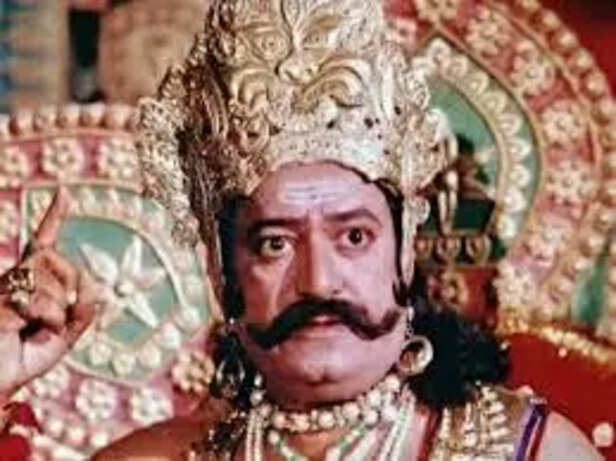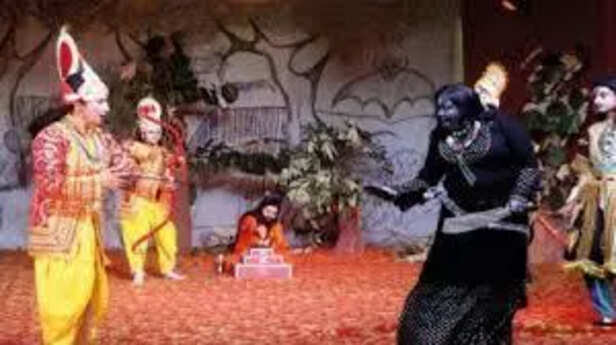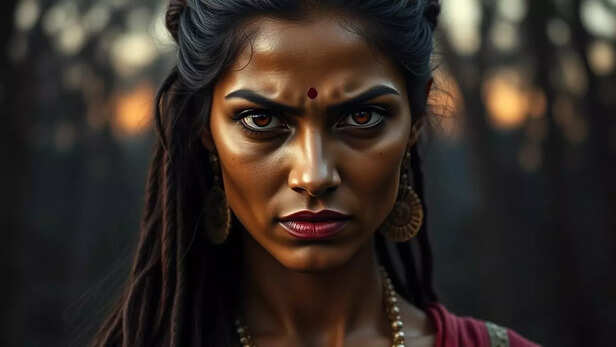If Ramayana is told by Supnakha -She’d Tell You What Real REJECTION Feels Like!
Shivika Gupta | Apr 12, 2025, 13:51 IST
Supnakha
( Image credit : Times Life Bureau )
You’ve heard her name. Surpanakha—the demoness who dared to desire.A side character.Fast forward to today. Surpanakha exists. She lives in every girl mocked for not fitting into society’s narrow beauty ideals. She exists in every woman who’s called “too loud,” “too aggressive,” “too much.”She lives in every meme that body-shames a celebrity, in every ghosted text thread, and in every woman who dares to want something more. She might start by telling you how it feels to be a woman who wanted love and was torn apart—literally and figuratively—for daring to ask.
What Surpanakha experienced was not unique to her time.It’s timeless.Because the world still doesn’t know how to handle a woman who wants something she’s not “supposed” to ask for.She’d reclaim her space—not as a demoness, but as a woman who felt too much in a world that wanted her to feel nothing at all.She wouldn’t beg for sympathy. She’d demand recognition.

In Valmiki’s Ramayana, Surpanakha is introduced as the sister of Ravana, the demon king. She’s described as hideous, lustful, and dangerous—instantly cast as a figure of threat. When she approaches Rama and proposes marriage, he politely declines. But when she turns to Lakshmana, his response is not just rejection—it is ridicule. When she persists, he mutilates her—cuts off her nose and ears. This moment is often seen as comic relief or justifiable action.But take a breath. Can you imagine a woman today expressing desire and being punished by facial mutilation? In today’s world, we call that a hate crime. Back then, it was just mythology. But myths aren’t just stories. They are reflections of the collective psyche—what we fear, what we glorify, and who we silence.
Let’s talk about rejection—not the rom-com kind, but the deep, soul-crushing kind. Surpanakha’s story is not simply about being told “no.”
It’s about being told:

Today’s Surpanakhas don’t live in forests. They live in offices, dating apps, WhatsApp groups, and comment sections.
They’re told:

One of the most overlooked aspects of Surpanakha’s story is how her appearance is weaponized against her. She’s deemed ugly—therefore, her desire is invalid. This links directly to how modern beauty standards operate. We’re conditioned to believe that only certain bodies are deserving of affection. That beauty equals worth, and worth equals permission to be loved. But Surpanakha’s pain cuts through that lie. She didn’t beg to be loved because she was beautiful. She demanded to be loved because she felt deeply.
And that made the world uncomfortable.
If you’ve ever looked in the mirror and wondered if you were “enough” for love—
Congratulations ! You’ve felt what Surpanakha felt.

Why are we so afraid of female rage? Surpanakha’s retaliation—seeking revenge, calling upon her brother, triggering war—is always framed as proof of her monstrosity. But what if we looked at it through another lens? What if her rage wasn’t madness—but mourning? Not revenge—but rebellion? When women are silenced, ridiculed, and erased long enough, they stop asking for space.
They take it. Her war wasn’t against Rama or Lakshmana. It was against a world that didn’t give her a choice.
If Surpanakha had a mic today, here’s what she might say:
“I asked for love—not because I was desperate, but because I had the courage to want.
I was punished—not because I was evil, but because I didn’t shrink myself.
You mocked my scars—but they’re the price I paid for being seen in a world that wanted me invisible.”
Indian mythology is rich, layered, and open to interpretation. And in a time where we’re re-examining history, culture, and gender roles—it’s time we re-examine Surpanakha too. She wasn’t the problem. She was the symptom of a larger sickness— A culture that punishes women for desiring more than silence.
Surpanakha’s mic moment may never come in the epics.
But in conversations like this, in stories like yours and mine, in every woman who refuses to apologize for her feelings—
She finally gets to speak.
Not as a monster.
But as a mirror.
Explore the latest trends and tips in Health & Fitness, Travel, Life Hacks, Fashion & Beauty, and Relationships at Times Life!
Who was SURPANAKHA really?

Sister of Ravana.
( Image credit : Times Life Bureau )
In Valmiki’s Ramayana, Surpanakha is introduced as the sister of Ravana, the demon king. She’s described as hideous, lustful, and dangerous—instantly cast as a figure of threat. When she approaches Rama and proposes marriage, he politely declines. But when she turns to Lakshmana, his response is not just rejection—it is ridicule. When she persists, he mutilates her—cuts off her nose and ears. This moment is often seen as comic relief or justifiable action.But take a breath. Can you imagine a woman today expressing desire and being punished by facial mutilation? In today’s world, we call that a hate crime. Back then, it was just mythology. But myths aren’t just stories. They are reflections of the collective psyche—what we fear, what we glorify, and who we silence.
The Rage Beneath The Surface
It’s about being told:
- You’re not worthy of love
- Your appearance invalidates your feelings
- Your desire makes you dangerous
- You don’t get to want—you only get to obey
Modern Parallels—The Face of REJECTION Today

Fury in the todays world
( Image credit : Times Life Bureau )
Today’s Surpanakhas don’t live in forests. They live in offices, dating apps, WhatsApp groups, and comment sections.
They’re told:
- “You’re too emotional.”
- “You’re not my type.”
- “You’re intimidating.”
- “Don’t catch feelings, it’s just casual.”
Body, Desire & The Myth of Worthiness

Surpnakha Nose Incident.
( Image credit : Times Life Bureau )
One of the most overlooked aspects of Surpanakha’s story is how her appearance is weaponized against her. She’s deemed ugly—therefore, her desire is invalid. This links directly to how modern beauty standards operate. We’re conditioned to believe that only certain bodies are deserving of affection. That beauty equals worth, and worth equals permission to be loved. But Surpanakha’s pain cuts through that lie. She didn’t beg to be loved because she was beautiful. She demanded to be loved because she felt deeply.
And that made the world uncomfortable.
If you’ve ever looked in the mirror and wondered if you were “enough” for love—
Congratulations ! You’ve felt what Surpanakha felt.
Her Rage wasn't Evil- is was Human

Surpanakha_ Twilight of Contemplation.
( Image credit : Times Life Bureau )
Why are we so afraid of female rage? Surpanakha’s retaliation—seeking revenge, calling upon her brother, triggering war—is always framed as proof of her monstrosity. But what if we looked at it through another lens? What if her rage wasn’t madness—but mourning? Not revenge—but rebellion? When women are silenced, ridiculed, and erased long enough, they stop asking for space.
They take it. Her war wasn’t against Rama or Lakshmana. It was against a world that didn’t give her a choice.
The Mic she never got
“I asked for love—not because I was desperate, but because I had the courage to want.
I was punished—not because I was evil, but because I didn’t shrink myself.
You mocked my scars—but they’re the price I paid for being seen in a world that wanted me invisible.”
Rewriting the Epic
Surpanakha’s mic moment may never come in the epics.
But in conversations like this, in stories like yours and mine, in every woman who refuses to apologize for her feelings—
She finally gets to speak.
Not as a monster.
But as a mirror.
Explore the latest trends and tips in Health & Fitness, Travel, Life Hacks, Fashion & Beauty, and Relationships at Times Life!
